Autumnal Adventures
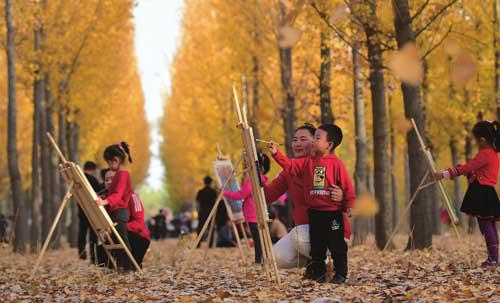
Children from a kindergarten in Cangzhou, north Chinas Hebei Province, sketch in an ecological park, enjoying the beauty of autumn on October 25.
Gang Crackdown
Chinese procuratorates have approved the arrest of over 57,000 people suspected of gang crimes in some 17,000 cases in the fi rst nine months of the year, the Supreme Peoples Procuratorate (SPP) reported on October 30.
Meanwhile, more than 200 people were arrested for protecting criminal organizations by concealing their crimes or shielding them from punishment, the SPP said.
Of those arrested for gang crimes, over 32,000 have been prosecuted.
The SPP is working with the Ministry of Public Security to supervise the crackdown on 24 major gang crimes in Hebei, Henan and Yunnan provinces this year.
It has built a special team, which was dispatched to Yunnan to help guide the fi ght against cross-border gang crimes, the SPP said.
Procuratorates at all levels have joined in the crackdown on gang crimes, strengthening supervision over case registration, investigations, trials and execution of punishment.
Left-Behind Kids
China has fewer left-behind children in the countryside due to government policies that are helping to bring migrant families together, a ministry offi cial said on October 30.
“The number of rural left-behind children dropped to 6.97 million as of the end of August, down 22.7 percent from two years ago when the government started tracking the numbers,” said Ni Chunxia, deputy head of the Social Affairs Department of the Ministry of Civil Affairs.
Ni said that about 70 percent of left-behind children lived in seven provinces in central and southwest China. Sichuan topped the list, reporting 765,000 left-behind children. Ni credited the drop in numbers to the anti-poverty campaign, urbanization and the rural revitalization strategy, which helped urban migrants bring their children to the cities or encouraged them to return to the countryside to start their own businesses.
Online With Parents
A study on the parent-child relationship in the digital era showed that 63.8 percent of primary and secondary school students in China chat with their parents via social network platforms, China Youth Daily reported on October 30.
The rate of chatting online with parents among Chinese students was higher than that in the other three countries studied, namely the United States, Japan and the Republic of Korea (ROK), according to the report.
Only 15.4 percent of primary and middle school students in China reported never chatting with their parents online, much lower than the 49.7 percent in the United States, 46 percent in Japan and 30.7 percent in the ROK.
As for the willingness to disclose ones social network pages to parents, the rate among Chinas primary and middle school students was 68.3 percent, higher than the rate in the other three countries.
The relatively high rates of online chatting and sharing of social network pages in China demonstrated that there is active interaction between parents and children on new media platforms, but parents should not neglect to communicate with their children in real-life scenarios, the report said.
Gender Equality
China has made headway in promoting gender equality, especially in terms of womens participation in national economic development, decision-making and management of state and social affairs, recent numbers showed. According to the National Bureau of Statistics, women employees in China made up 43.1 percent of the countrys workforce in 2016, exceeding the 40-percent target set in the Program for the Development of Chinese Women(2011-20).
Statistics also showed that more and more women are taking part in the world of business, accounting for about one quarter of the countrys entrepreneurs.
Compared with the 18th National Congress of the Communist Party of China (CPC), the 19th National Congress of the CPC had more women delegates, up 1.14 percentage points from the previous congress.
The 13th National Peoples Congress had the highest number of women deputies ever at 24.9 percent, with an increase of 1.5 percentage points from the previous congress.
The 13th National Committee of the Chinese Peoples Political Consultative Conference also saw an increase in women members, 2.55 percentage points higher than the previous committee.
Besides political participation, more women are getting an education. In 2016, the country had more than 1 million women postgraduates, exceeding the number of men for the fi rst time to account for 50.6 percent of the total.
In addition, women students made up 52.5 percent of undergraduates and junior college students in 2016, totaling 14.16 million.
Meanwhile, womens health has signifi cantly improved. The average life expectancy for women has increased to 79.43 years, and the maternal mortality rate has dropped from 30 per 100,000 births in 2010 to 19.6 per 100,000 births in 2017, making China one of the top 10 countries in womens and childrens health as identifi ed by the World Health Organization.
The 12th National Womens Congress, the top governing body of the All-China Womens Federation, opened on October 30 in Beijing and concluded on November 2.
Stone Art
Sculptor Zhang Zhenxiong (center) instructs a worker in stone carving in Huian, southeast Chinas Fujian Province. Huian stone carving has a history of 1,600 years and was listed as one of Chinas national intangible cultural heritages in 2006.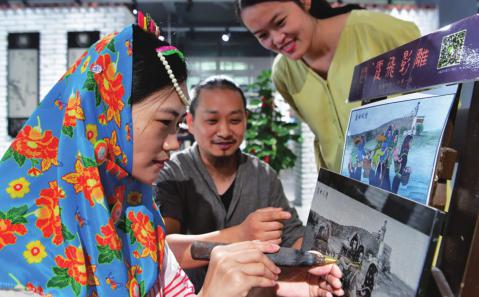
Super Hybrid Rice
Yuan Longping, known as the father of hybrid rice, and his team have set a new world record in super hybrid rice output, the science and technology department of north Chinas Hebei Province said on October 29.
The new world record was set in test fi elds in the city of Handan, which achieved an average yield of 1,203.36 kg of rice per mu (0.07 hectares) of farmland. The tested rice variety is called Xiangliangyou 900.
Yuan, who developed the worlds fi rst hybrid rice in 1974, has set multiple world records in hybrid rice yield in previous years. In 2017, he achieved a yield of 1,149.02 kg of rice per mu with the same variety in the same test fi elds.
Since the beginning of 2016, Yuans team has managed 42 hybrid rice test fi elds in 16 provincial regions across China, including Yunnan, Sichuan, Shaanxi, Guangdong, Chongqing and Hunan.
About 65 percent of the Chinese population depends on rice for their staple food.
Health Insurance
China has released a three-year work plan to boost health insurance for impoverished residents in rural areas in a bid to assist the ongoing poverty alleviation campaign.
The 2018-2020 work plan, focusing on people living in extremely impoverished areas and those suffering poverty through illness, aims to ensure that poverty-stricken rural residents benefi t more from health insurance, according to the State Medical Insurance Administration.
Basic medical insurance, major disease insurance and medical assistance should cover every rural resident by 2020, according to the plan, jointly released by the State Medical Insurance Administration, the Ministry of Finance and the State Council Leading Group Offi ce of Poverty Alleviation and Development.
Major disease insurance will pay more of the medical fees of impoverished rural residents by 2020, it added.
China has pledged to eradicate poverty by 2020, with about 30 million people left to be lifted out of poverty in less than three years.
“About 40 percent of these people are stricken by poverty caused by illness,” said Hu Jinglin, head of the State Medical Insurance Administration. “Many of them are suffering from serious or chronic diseases or diseases with frequent relapses.”
China views poverty caused by illness as a great challenge in the battle against poverty, issuing guidelines on carrying out health insurance programs in impoverished rural areas in 2016.
Vacation Days
Tourists visit Sanshan Village, Dongshan Town, Suzhou City in east Chinas Jiangsu Province, on October 27. Located on Taihu Lake, the village consists of three small islands, which have been developed for rural tourism in recent years to increase local residents income.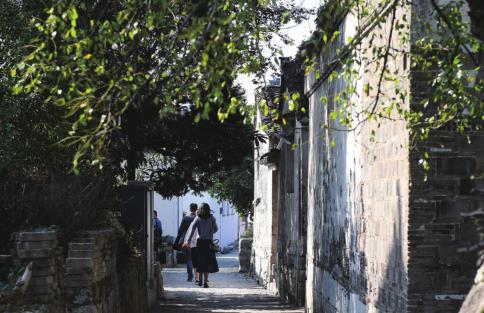
Economic Evaluation
The Political Bureau of the Communist Party of China (CPC) Central Committee held a meeting on October 31 to analyze the economy and plan the countrys economic work.
The meeting, presided over by Xi Jinping, General Secretary of the CPC Central Committee, said that China has achieved sustained and healthy economic and social development this year.
In the fi rst three quarters, the country achieved overall economic stability with steady progress, and economic performance was kept within a proper range, according to a statement issued after the meeting.
The economic structure continued to improve. Work has been done to support the private sector while a series of measures aimed to pro- mote the healthy development of the fi nancial market boosted market sentiment.
The economy has seen changes amid overall stability with increased downward pressure. Some companies are suffering from operating diffi culties while some risks accumulated a long time ago have been exposed.
“China should attach great importance to the current situation and be more proactive in taking measures to cope with the issues,”said the statement.
The current economic situation is a combined result of longterm and short-term as well as internal and external factors. Chinas economy is transitioning from a stage of high-speed growth to a phase of high-quality growth while the external environment has seen profound changes. Some of the domestic policies are yet to see their effects.
The country will uphold the underlying principle of pursuing progress while ensuring stability, remain committed to the new development philosophy, pursue supply-side structural reform as the main task, further push reform and opening up wider, and come up with targeted measures to address major contradictions.
China will continue to promote high-quality development, implement proactive fi scal policy and prudent monetary policy, and move to stabilize employment, fi nance, foreign trade, foreign investment, domestic investment and expectations to cope with external environment changes and ensure stable economic development.
The country vowed to address the diffi culties plaguing private busi- nesses as well as small and mediumsized enterprises, and improve institutions to promote the capital markets long-term and healthy development.
It will also promote active and effective use of foreign investment, and safeguard the legitimate interests of foreign companies operating in China, the statement added.
Soaking up the Sun
The Dongsheng Photovoltaic Agricultural and Technological Parks photovoltaic greenhouses generate power on October 31. The park, located in Changxing County, east Chinas Zhejiang Province, has over 300 such greenhouses, which have helped increase local incomes.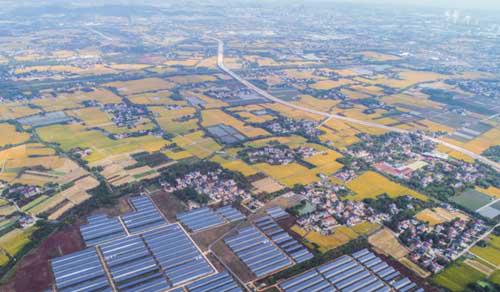
Software Boom
Chinas software industry experienced rapid revenue growth in the fi rst three quarters of the year, offi cial data show.
Business revenue increased by 15 percent year on year, reaching 4.5 trillion yuan ($647.4 billion), faster than the growth during the same period last year, according to the Ministry of Industry and Information Technology (MIIT).
Industry profi ts climbed by 14.4 percent to 568.9 billion yuan($81.67 billion) during the JanuarySeptember period. In the third quarter (Q3), software industry profi ts jumped by 21.8 percent, faster than 10.8 percent and 10.2 percent in Q1 and Q2, respectively.
Sales of software products reached 1.33 trillion yuan ($191.5 billion) in the fi rst three quarters, while revenue from information technology services surged 18.5 percent to 2.5 trillion yuan ($360 billion), MIIT data show.
Chinese Billionaires
China produced 55 billionaires last year, topping the international tables. A report released on October 26 by Switzerlands UBS bank and international services network PwC also showed that China, along with India, made three quarters of the worlds newly minted billionaires.
The United States, which took second place on the list, produced 53 billionaires in 2017. The report put the estimated global wealth of the 2,158 billionaires at $8.9 trillion.
“In a landmark year, the number of Asian billionaires on the database exceeded U.S billionaires for the fi rst time,” the report said. “Powered by the rise of Chinas entrepreneurs in an exceptional year, the number of Asian billionaires rose by almost a quarter to 637.”
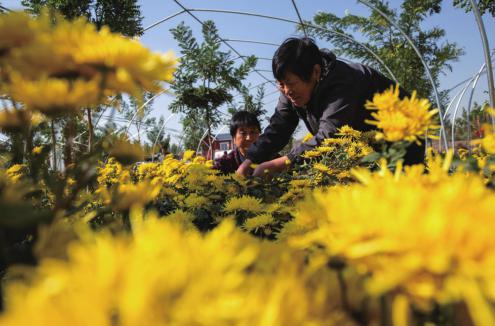
SOEs Go Global
Chinas centrally administered state-owned enterprises (SOEs) have actively participated in the Belt and Road Initiative, undertaking over 3,000 projects in the past fi ve years, a senior offi cial said on October 30.
“The fi rms have engaged in the construction of railways, ports, highways, communication networks, and other infrastructure projects in countries and regions along the Belt and Road routes,” said Weng Jieming, deputy head of the StateOwned Assets Supervision and Administration Commission of the State Council, at a press briefi ng.
“In energy and resources, the companies cooperated on more than 60 projects in over 20 countries, in line with the countries demands for economic development.”
Central SOEs also invested in a large number of industrial and manufacturing projects in a bid to upgrade local economies. “The companies played a positive role in improving local peoples livelihood,”Weng said. “About 85 percent of the employees at the central SOEsoverseas branches are hired locally.”
“The fi rms will continue to optimize their models of business cooperation, based on mutual benefi ts, sound planning and risk control. They will also strengthen cooperation with Chinese private fi rms, local companies in countries along the Belt and Road routes and international corporations to better guard against risks.”
As of the end of 2017, central SOEs had more than 7 trillion yuan($1 trillion) of overseas assets, with their overseas units realizing 4.7 trillion yuan ($670 billion) in revenues and 106.4 billion yuan ($15.27 billion) in profi ts annually.

